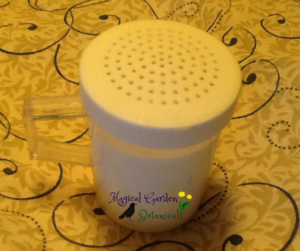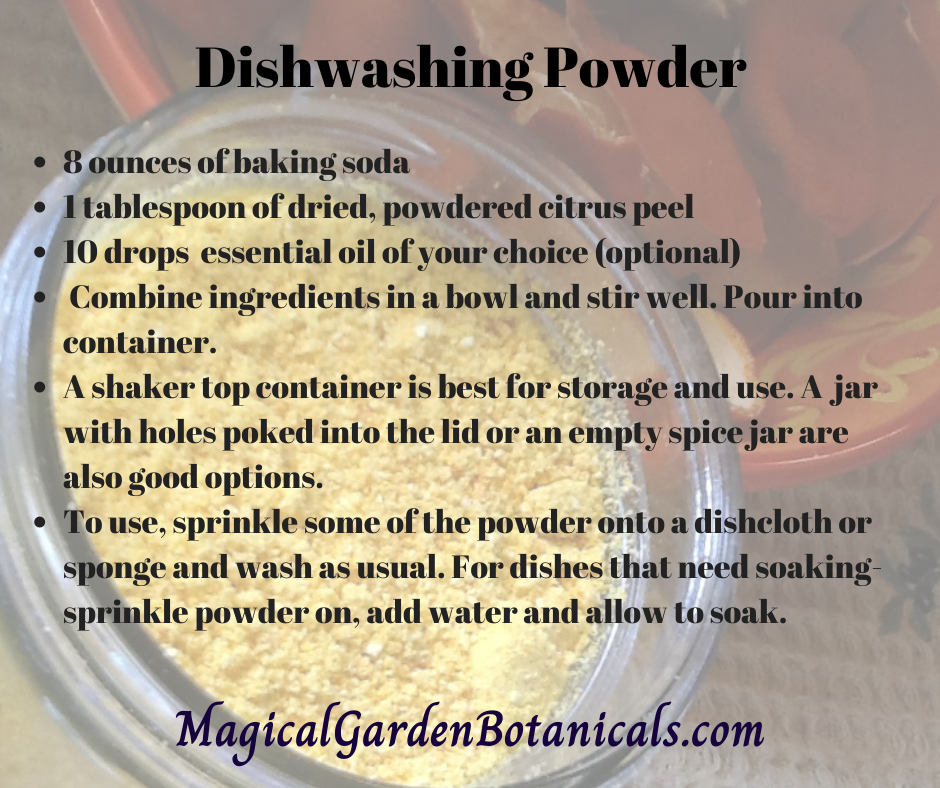Time to Come Clean
AND…
When I first began to learn about all of the toxins in our cleaning products, I was a bit overwhelmed. I wanted to change every single item in my house – ASAP! I knew it would take time, and found the simplest way was to prioritize. The first items I replaced were the ones that I used the most on a daily basis. Naturally, dish soap was on the top of the list. At around the same time, I had stopped using my dishwasher. Why? It was hardly ever full enough at the end of the day to justify running it. With all of the water, detergent, and energy required to run a dishwasher, it was a sensible decision for our family to simply wash the dishes by hand.
Nowadays, there are a variety of dishwashing soaps and detergents that are relatively free of most toxins. Eighteen years ago, the choices were quite limited, and most didn’t clean very well either. So, I did what I had become accustomed to doing on my new venture of “going green”…I created my own recipes.
I created some interesting concoctions. What I found to be the most effective happened to be the most simple and basic of all ingredients found in many kitchen cupboards- baking soda.
So before we jump into baking soda, let’s talk about what detergents really do. The main purpose of a detergent is to lower the surface tension of the water. So in other words, to make water “wetter”.
What about the bubbles? More bubbles doesn’t mean more clean….it’s just a conditioning we have had over the years that we need lather to clean.
So, back to baking soda….baking soda is alkaline. It is perhaps the best substance to help break down stuck-on foods (eggs and oven-baked foods) and sticky foods (cheese and bread dough). Most dishwashing detergents have a pH of 8-9, baking soda has a pH of 8.
So for quite some time, I was using just plain baking soda to soak and wash my dishes. Sometimes I would add essential oils for a bit of scent and to boost the cleaning power. Then one day while I was powdering citrus peels, I had an idea… why not add some of the powdered peels to the baking soda? Citrus peels add more scrubbing power with their degreasing properties. And so this is how the simple and cost-effective recipe of dishwashing powder came about.
To make the dishwashing powder all that is required is baking soda, powdered dried orange peels, and essential oil of your choice. A shaker type container is best for storage and use. A jar with holes poked into the lid or an empty spice jar are also good options.
To 8 ounces of baking soda, add 1 tablespoon of dried powdered orange peel. I also add about 10 drops of essential oil. Stir well and pour into the container. Adjust measurements accordingly depending on the size of your jar.
To use, sprinkle some of the powder onto a dishcloth or sponge and wash as usual. For dishes that need soaking- sprinkle the powder on, add water and allow to soak. There is a bit of an adjustment period when transitioning from a sink full of bubbles to no bubbles at all. However, seeing how effortlessly this powder removes stubborn, stuck-on foods makes it all worthwhile.

Sources:
Ingredients found in standard dishwashing liquids-
explainthatstuff.com/detergents
msds/Dawn_Professional_Dish_Detergent

Daughter of the Earth, Mother of her creations. Ivanna (Evie) doesn’t care for titles, but the ones that fit best are homeschool mom, herbalist, and blogger. Her greatest joy is guiding others to find true wellness within themselves and Mother Earth. When not spending time with her beloved family, she can be found researching everything related to holistic wellness, crafting herbal remedies, or visiting with the plants in the Magical Garden.





Response to "Time to Come Clean"
This is amazing! I’ll probably look into this when I get my own place in the future. But right now I live with housemates who don’t really care about that stuff!
Thank you for reading Chloe. 🙂 It can be a bit of a challenge to make changes when not everyone shares the same ideas. I hope you get the chance to try this out soon.